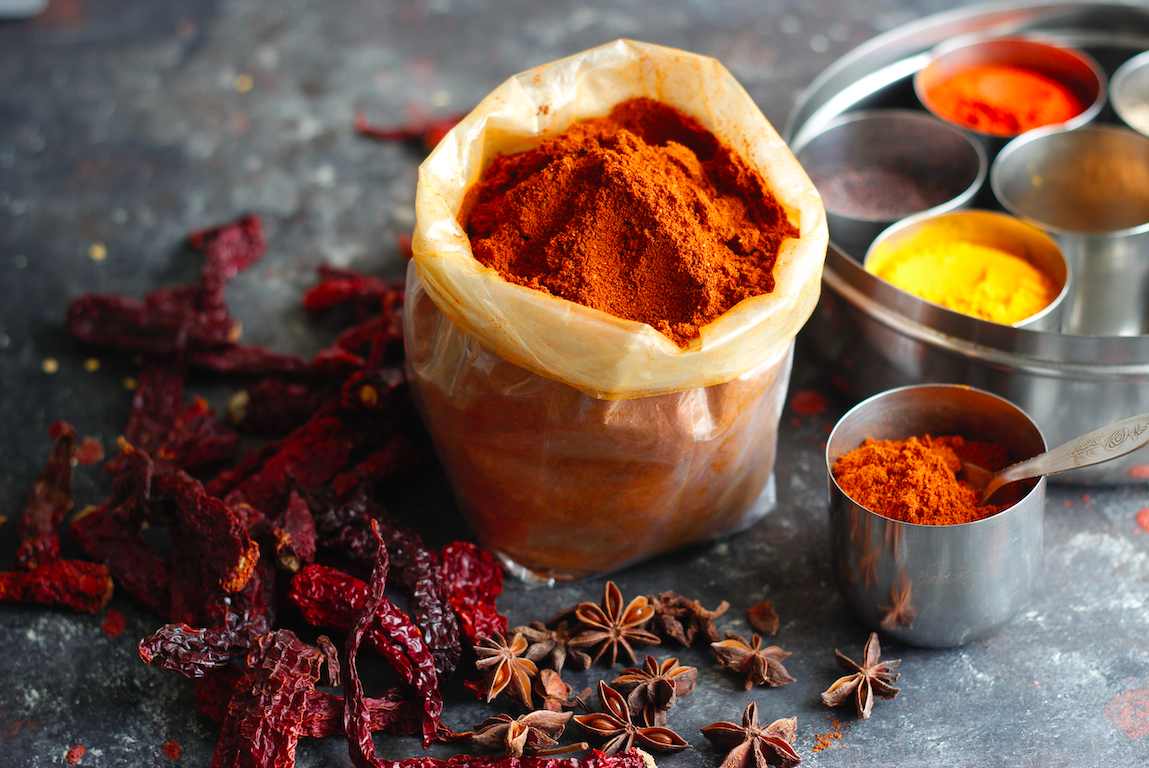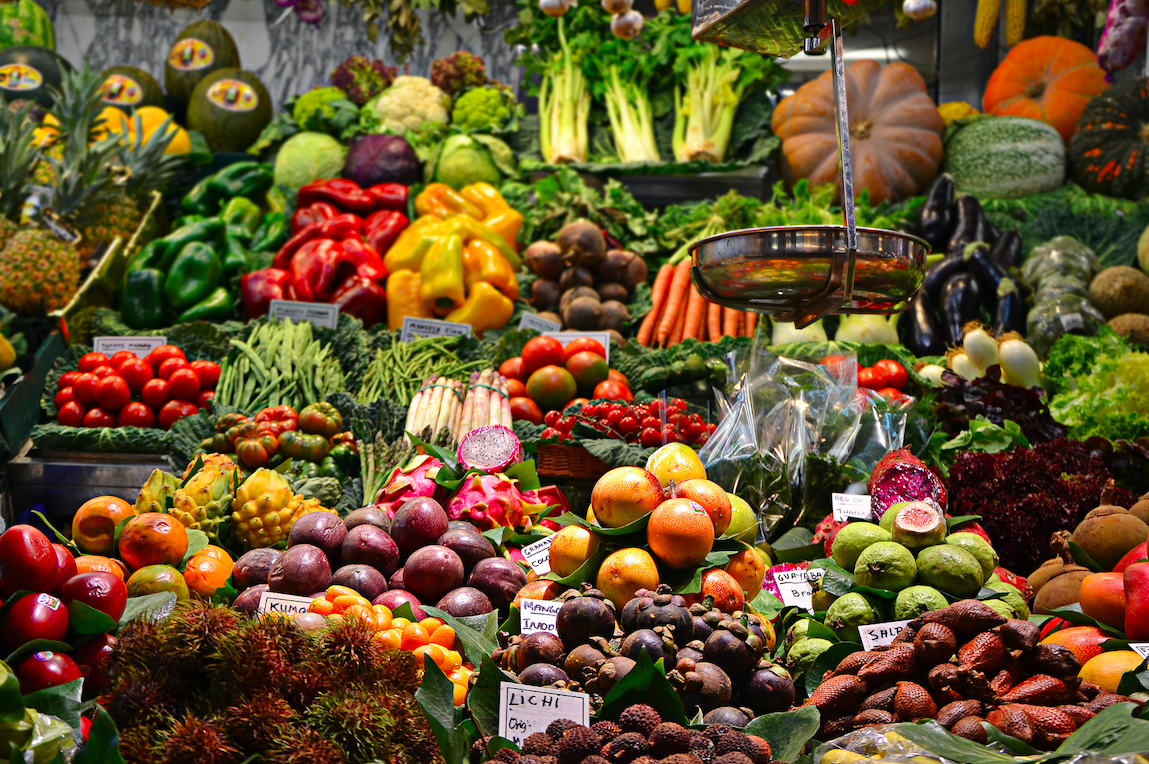Peripheral neuropathy is caused by damaged peripheral nerves (outside the brain and spinal cord), leading to classic symptoms of tingling, numbness, muscle weakness, and severe pain.
In this article, we will discuss the different ways that turmeric can help treat peripheral neuropathy naturally.
Pain Control (Analgesic Effect)
In a 2018 scientific review, researchers analyzed the analgesic—or pain lessening—effects of turmeric².
The results showed that taking turmeric supplements reduced painful sensations, and attributed this action to the potency of curcumin. In their conclusion, the researchers stated, “Although the mechanisms of pain mitigating effects are not very clear, there is compelling evidence proving that curcumin plays an essential role.”
In another study, researchers focused on the molecular effects of turmeric to reveal its biochemical mechanisms³. They discovered that turmeric increases the production of certain proteins and decreases entire metabolic pathways responsible for painful sensations.
Here’s how it works:
The body responds to foreign invaders like bacteria, viruses, and fungi by turning on certain metabolic pathways. One of the classic metabolic pathways known to cause pain is called cyclooxygenase 1, 2 (COX-1, COX-2). This pathway produces a series of hormones, like thromboxane, prostacyclin, and prostaglandin⁴.
One such prostaglandin known as E2 is responsible for the stimulation of nerve endings; this mechanism is what triggers pain signals being sent to the brain, where the pain is recognized⁵.
Curcumin was found to lower pain by suppressing the expression of the COX-2 gene. In doing so, a lower concentration of the prostaglandin E2 is found in the bloodstream, and ultimately, the site of neuropathic pain⁶.
Curcumin also lowers pain by lowering the production of cortisol, a stress hormone produced by the adrenal glands. This is achieved by interfering with potassium channels, which halts the production of cortisol through complex biochemical processes⁷.
Lastly, curcumin reduces the concentrations of a neurotransmitter known as substance P. This neurotransmitter is typically found in nerve endings and is responsible for the transmission of pain signals⁸.
These results emphasize the analgesic effects of curcumin, and showcase its potential as a natural treatment for peripheral neuropathy.
Anti-inflammatory Properties
Chronic inflammation is a hallmark of peripheral neuropathy and is thought to trigger symptoms of tingling, numbness, and pain⁹.
While inflammation is designed to protect your body against foreign pathogens, in certain circumstances, several underlying conditions cause it to become destructive rather than reparative.
According to researchers, low-grade inflammation contributes to many serious medical conditions, including diabetes—a major trigger of peripheral neuropathy—as well as heart disease, cancer, and neurological diseases like Alzheimer’s and Parkinson’s¹⁰.
Unfortunately, medication-based treatment is not always possible because of the damaging side effects many of these drugs have¹¹.
For this reason, scientists are always searching for natural anti-inflammatory remedies that are free from these types of side effects.
The good news is that curcumin is an impressively potent anti-inflammatory compound—one that rivals anti-inflammatory pharmaceuticals, in fact¹².
The mechanism is again complex, but well-documented. Via gene suppression, curcumin appears to block a cytokine-triggering compound called NF-kb, effectively stopping pro-inflammatory substances (cytokines and interleukins) from being produced in the first place¹³.
The blocking of cytokines is important, as they usually circulate in the bloodstream and activate other pro-inflammatory metabolic cascades. This constant state of inflammation is what leads to blood vessel damage, neuronal overstimulation (pain), and abnormally high rates of cellular death¹⁴.
Of note — pro-inflammatory compounds are present in high concentrations when a patient experiences neuropathic pain.
Fortunately, this “interruption” appears to reduce the concentration of another significant compound—tumor necrosis factor α (TNF-α). This molecule has been linked to most chronic illnesses, including neuropathic pain, because of its involvement in all inflammatory processes¹⁵.
By blocking the production of certain substances and countering the effect of others, curcumin is considered one of the most potent anti-inflammatory compounds in the world.
What’s more, this natural substance rarely leads to any side effects, offering a huge advantage over pharmacological drugs notoriously known for triggering severe adverse effects¹⁶.
Balanced Oxidative Stress
Free radicals are metabolic by-product substances in the body that primarily target the structural integrity of microbes (e.g., bacteria, viruses, fungi)¹⁷. This destruction comes from the free radicals’ ability to “punch” holes in the membranes of these invaders.
Unfortunately, free radicals also destroy our cells under certain circumstances. The reason behind this is simple: the molecules that compose the outer membranes and proteins of foreign pathogens are identical to those found in our body.
To counteract this, a steady number of compounds known as antioxidants are kept in supply; these antioxidants counter the effects of free radicals, keeping the process in check¹⁸.
However, this system is not perfect. Sometimes an elevated number of free radicals that cannot be neutralized by antioxidants persist; this condition is referred to as oxidative stress¹⁹.
Based on years of experiments and clinical studies, researchers are certain of the major role that oxidative stress plays in a variety of medical conditions. These include coronary artery disease, type 2 diabetes, neurodegenerative ailments like Alzheimer’s disease and Parkinson’s disease, and peripheral neuropathy²⁰.
Established throughout several studies, turmeric exerts powerful anti-oxidative effects capable of neutralizing free radicals inside the cell²¹ ²² ²³.
In other words, turmeric provides the body with a back-up supply of antioxidants to help replenish shortages.
Today, many unhealthy lifestyle habits contribute to oxidative stress—which is why we need natural antioxidants more than ever²⁴.
For instance, if you consume too many products with artificial sweeteners and trans-fats, you’re more likely to be in a state of oxidative stress. Adding turmeric to your diet will reduce the damage of free radicals produced during this state. This in turn will lessen the symptoms of neuropathic pain²⁵.
Additionally, turmeric can boost the function of other naturally-occurring antioxidant enzymes²⁶.
Combined with the anti-inflammatory and analgesic properties of curcumin, the neutralization of free radicals could significantly lower the severity of neuropathic pain, providing a natural treatment for peripheral neuropathy.
Neuroprotective Properties
Curcumin protects the nerves from several destructive processes—such as programmed cell death—by helping to boost the production of protective proteins²⁷.
The development of peripheral neuropathy has numerous causes, including abnormally elevated levels of glucose in the blood, chemotherapy, and side effects from pharmacological drugs²⁸.
In one study, researchers found that curcumin’s anti-oxidative properties extend to the nerves by protecting them from neurotoxic agents²⁹.
Interestingly, new evidence from preclinical studies suggests that curcumin possesses regenerative properties. This means that it helps damaged nerve cells to repair themselves, potentially restoring lost sensations and/or preventing neuropathy in the first place³⁰.
This process is thought to be to be the result of brain growth factors being released—which aid the cells to form new protective coatings known as myelin sheaths.
Curcumin also slows down aging, a process largely mediated by its metabolite, tetrahydrocurcumin. In one study, scientists found that tetrahydrocurcumin increases the life span of middle-aged mice. Moreover, researchers often compared the anti-aging properties of curcumin to those of resveratrol, another powerful anti-aging compound³¹.
Of note — most patients with neuropathic pain belong to older age groups³².
Reduced Risk of Neurological Diseases
Curcumin boosts the levels of a central nervous system growth hormone known as brain-derived neurotrophic factor (BDNF)³³.
This is significant, because up until recently, the vast majority of medical experts believed that neurons could not regenerate after childhood. However, there is new evidence that suggests otherwise.
Today, researchers have successfully identified BDNF as a major promoter of neurogenesis—the growth of new neuronal tissue³⁴.
In fact, many studies have found that this hormone is severely deficient in patients with neurodegenerative diseases, such as Alzheimer’s disease and peripheral neuropathy³⁵.
Moreover, patients with major depressive disorder who are not receiving appropriate treatment had low serum levels of BDNF³⁶.
While this finding does not directly help patients who already have peripheral neuropathy, it could reduce the risk of developing conditions that precipitate neuropathic pain in the first place.
To support this hypothesis, one study³⁷ found that laboratory animals taking turmeric supplements during the early stages of peripheral neuropathy prevented chronic neuropathic pain from developing.
Here’s the mechanism of action:
Over the past few years, several studies found that hyperalgesia—an increased sensitivity to heat and touch is caused by an enzyme known as extracellular signal-regulated kinase (ERK)³⁸.
Furthermore, the activation of ERK in nerve roots is correlated with chronic neuropathic pain symptoms.
Therefore, preventing ERK activation could reduce the risk of chronic pain induced by nerve damage.
Similar to ERK, another enzyme known as c-Jun N-terminal kinase (JNK) rapidly activates in response to stressful stimuli. However, when researchers injected JNK inhibitors into the spinal cord, they prevented the development of mechanical hyperalgesia (sensitivity to touch)³⁹.
Evidence shows that curcumin suppresses the activation of both ERK and JNK; it also reverses mechanical hyperalgesia. This combined action eventually leads to improved symptoms of acute neuropathic pain and reduces the risk of chronic peripheral neuropathy⁴⁰.
Takeaway Message
Turmeric possesses numerous biochemical properties that make it the perfect natural treatment for peripheral neuropathy—regardless of the underlying disease causing the pain.
In fact, turmeric may help prevent this condition altogether by reducing the risk of certain high-risk conditions like diabetes and chemotherapy-induced neuropathy, as well as other medical pathologies.
Hopefully, this article revealed the vital role of turmeric in controlling the symptoms of neuropathy, by providing strong scientific evidence of its biochemical actions. If you still have any questions, please don’t hesitate to ask in the comment section below.
References
1-Ashley, K., & Lui, F. (2019). Physiology, Nerve. In StatPearls [Internet]. StatPearls Publishing. Link
2-Sun, J., Chen, F., Braun, C., Zhou, Y. Q., Rittner, H., Tian, Y. K., … & Ye, D. W. (2018). Role of curcumin in the management of pathological pain. Phytomedicine, 48, 129-140. Link
3-Zhu, X., Li, Q., Chang, R., Yang, D., Song, Z., Guo, Q., & Huang, C. (2014). Curcumin alleviates neuropathic pain by inhibiting p300/CBP histone acetyltransferase activity-regulated expression of BDNF and cox-2 in a rat model. PloS one, 9(3), e91303. Link
4- Rouzer, C. A., & Marnett, L. J. (2009). Cyclooxygenases: structural and functional insights. Journal of lipid research, 50(Supplement), S29-S34. Link
5- Stock, J. L., Shinjo, K., Burkhardt, J., Roach, M., Taniguchi, K., Ishikawa, T., … & Audoly, L. P. (2001). The prostaglandin E 2 EP1 receptor mediates pain perception and regulates blood pressure. The Journal of clinical investigation, 107(3), 325-331. Link
6- Zanjani, T. M., Ameli, H., Labibi, F., Sedaghat, K., & Sabetkasaei, M. (2014). The attenuation of pain behavior and serum COX-2 concentration by curcumin in a rat model of neuropathic pain. The Korean journal of pain, 27(3), 246. Link
7- Enyeart, J. A., Liu, H., & Enyeart, J. J. (2008). Curcumin inhibits bTREK-1 K+ channels and stimulates cortisol secretion from adrenocortical cells. Biochemical and biophysical research communications, 370(4), 623-628. Link
8- Wei, S., Xu, H., Xia, D., & Zhao, R. (2010). Curcumin attenuates the effects of transport stress on serum cortisol concentration, hippocampal NO production, and BDNF expression in the pig. Domestic animal endocrinology, 39(4), 231-239. Link
9- Hughes, J. P., Chessell, I., Malamut, R., Perkins, M., Bačkonja, M., Baron, R., … & McMahon, S. B. (2012). Understanding chronic inflammatory and neuropathic pain. Annals of the New York Academy of Sciences, 1255(1), 30-44. Link
10-Libby, P., Ridker, P. M., & Maseri, A. (2002). Inflammation and atherosclerosis. Circulation, 105(9), 1135-1143. Link
11-Saad, J., & Pellegrini, M. V. (2019). Nonsteroidal Anti-Inflammatory Drugs (NSAID) Toxicity. In StatPearls [Internet]. StatPearls Publishing. Link
12-Jurenka, J. S. (2009). Anti-inflammatory properties of curcumin, a major constituent of Curcuma longa: a review of preclinical and clinical research. Alternative medicine review, 14(2). Link
13- Olivera, A., Moore, T. W., Hu, F., Brown, A. P., Sun, A., Liotta, D. C., … & Miller, A. H. (2012). Inhibition of the NF-κB signaling pathway by the curcumin analog, 3, 5-Bis (2-pyridinylmethylidene)-4-piperidone (EF31): anti-inflammatory and anti-cancer properties. International immunopharmacology, 12(2), 368-377. Link
14- Prasad, S., Sung, B., & Aggarwal, B. B. (2012). Age-associated chronic diseases require age-old medicine: role of chronic inflammation. Preventive medicine, 54, S29-S37. Link
15- Chu, W. M. (2013). Tumor necrosis factor. Cancer letters, 328(2), 222-225. Link
16- Hewlings, S. J., & Kalman, D. S. (2017). Curcumin: a review of its’ effects on human health. Foods, 6(10), 92. Link
17- Kubota, C., Torii, S., Hou, N., Saito, N., Yoshimoto, Y., Imai, H., & Takeuchi, T. (2010). Constitutive reactive oxygen species generation from autophagosome/lysosome in neuronal oxidative toxicity. The Journal of biological chemistry, 285(1), 667–674. Link
18- Lobo, V., Patil, A., Phatak, A., & Chandra, N. (2010). Free radicals, antioxidants and functional foods: Impact on human health. Pharmacognosy reviews, 4(8), 118. Link
19- Storz, G., & Imlayt, J. A. (1999). Oxidative stress. Current opinion in microbiology, 2(2), 188-194. Link
20-Liguori, I., Russo, G., Curcio, F., Bulli, G., Aran, L., Della-Morte, D., … & Abete, P. (2018). Oxidative stress, aging, and diseases. Clinical interventions in aging, 13, 757. Link
21-Kumar, G. S., Nayaka, H., Dharmesh, S. M., & Salimath, P. V. (2006). Free and bound phenolic antioxidants in amla (Emblica officinalis) and turmeric (Curcuma longa). Journal of food composition and analysis, 19(5), 446-452. Link
22-Tilak, J. C., Banerjee, M., Mohan, H., & Devasagayam, T. P. A. (2004). Antioxidant availability of turmeric in relation to its medicinal and culinary uses. Phytotherapy Research: An International Journal Devoted to Pharmacological and Toxicological Evaluation of Natural Product Derivatives, 18(10), 798-804. Link
23-Maizura, M., Aminah, A., & Wan Aida, W. M. (2011). Total phenolic content and antioxidant activity of kesum (Polygonum minus), ginger (Zingiber officinale) and turmeric (Curcuma longa) extract. International Food Research Journal, 18(2). Link
24-Kelishadi, R., Mirghaffari, N., Poursafa, P., & Gidding, S. S. (2009). Lifestyle and environmental factors associated with inflammation, oxidative stress and insulin resistance in children. Atherosclerosis, 203(1), 311-319. Link
25-Dai, J., Jones, D. P., Goldberg, J., Ziegler, T. R., Bostick, R. M., Wilson, P. W., … & Vaccarino, V. (2008). Association between adherence to the Mediterranean diet and oxidative stress. The American journal of clinical nutrition, 88(5), 1364-1370. Link
26-Agarwal, R., Goel, S. K., & Behari, J. R. (2010). Detoxification and antioxidant effects of curcumin in rats experimentally exposed to mercury. Journal of Applied Toxicology, 30(5), 457-468. Link
27-Cole, G. M., Teter, B., & Frautschy, S. A. (2007). Neuroprotective effects of curcumin. In The molecular targets and therapeutic uses of curcumin in health and disease (pp. 197-212). Springer, Boston, MA. Link
28-Grisold, W., Cavaletti, G., & Windebank, A. J. (2012). Peripheral neuropathies from chemotherapeutics and targeted agents: diagnosis, treatment, and prevention. Neuro-oncology, 14(suppl_4), iv45-iv54. Link
29-Prasad, S. N. (2014). Neuroprotective effect of geraniol and curcumin in an acrylamide model of neurotoxicity in Drosophila melanogaster: relevance to neuropathy. Journal of insect physiology, 60, 7-16. Link
30-Ma, J., Liu, J., Yu, H., Wang, Q., Chen, Y., & Xiang, L. (2013). Curcumin promotes nerve regeneration and functional recovery in rat model of nerve crush injury. Neuroscience letters, 547, 26-31. Link
31- Xiang, L., Nakamura, Y., Lim, Y. M., Yamasaki, Y., Kurokawa-Nose, Y., Maruyama, W., … & Tsuda, L. (2011). Tetrahydrocurcumin extends life span and inhibits the oxidative stress response by regulating the FOXO forkhead transcription factor. Aging (Albany NY), 3(11), 1098. Link
32- Popescu, S., Timar, B., Baderca, F., Simu, M., Diaconu, L., Velea, I., & Timar, R. (2016). Age as an independent factor for the development of neuropathy in diabetic patients. Clinical interventions in aging, 11, 313. Link
33-Binder, D. K., & Scharfman, H. E. (2004). Brain-derived neurotrophic factor. Growth factors (Chur, Switzerland), 22(3), 123. Link
34-Rossi, C., Angelucci, A., Costantin, L., Braschi, C., Mazzantini, M., Babbini, F., … & Caleo, M. (2006). Brain‐derived neurotrophic factor (BDNF) is required for the enhancement of hippocampal neurogenesis following environmental enrichment. European Journal of Neuroscience, 24(7), 1850-1856. Link
35-Wang, Z. H., Xiang, J., Liu, X., Yu, S. P., Manfredsson, F. P., Sandoval, I. M., … & Ye, K. (2019). Deficiency in BDNF/TrkB Neurotrophic Activity Stimulates δ-Secretase by Upregulating C/EBPβ in Alzheimer’s Disease. Cell reports, 28(3), 655-669. Link
36-Shimizu, E., Hashimoto, K., Okamura, N., Koike, K., Komatsu, N., Kumakiri, C., … & Iyo, M. (2003). Alterations of serum levels of brain-derived neurotrophic factor (BDNF) in depressed patients with or without antidepressants. Biological psychiatry, 54(1), 70-75. Link
37-Jeon, Y., Kim, C. E., Jung, D., Kwak, K., Park, S., Lim, D., … & Baek, W. (2013). Curcumin could prevent the development of chronic neuropathic pain in rats with peripheral nerve injury. Current Therapeutic Research, 74, 1-4. Link
38- Chen, W. H., Chang, Y. T., Chen, Y. C., Cheng, S. J., & Chen, C. C. (2018). Spinal protein kinase C/extracellular signal–regulated kinase signal pathway mediates hyperalgesia priming. Pain, 159(5), 907-918. Link
39- Zhuang, Z. Y., Wen, Y. R., Zhang, D. R., Borsello, T., Bonny, C., Strichartz, G. R., … & Ji, R. R. (2006). A peptide c-Jun N-terminal kinase (JNK) inhibitor blocks mechanical allodynia after spinal nerve ligation: respective roles of JNK activation in primary sensory neurons and spinal astrocytes for neuropathic pain development and maintenance. Journal of Neuroscience, 26(13), 3551-3560. Link
40- Ji, F. T., Liang, J. J., Liu, L., Cao, M. H., & Li, F. (2013). Curcumin exerts antinociceptive effects by inhibiting the activation of astrocytes in spinal dorsal horn and the intracellular extracellular signal-regulated kinase signaling pathway in rat model of chronic constriction injury. Chinese medical journal, 126(6), 1125-1131. Link
Hey! Subscribe to our Newsletter
Join our newsletter to receive the latest article updates about treating neuropathy.




What is the proper dose of curcumin?
Holland & Barrett Turmeric capsules recommend 1 or 2 capsules per day after.food. 500 mg turmeric root. Is this correct for effective dosage?
Holland & Barrett Turmeric capsules recommend 1 or 2 capsules per day after.food. 500 mg turmeric root. Is this correct for effective dosage?